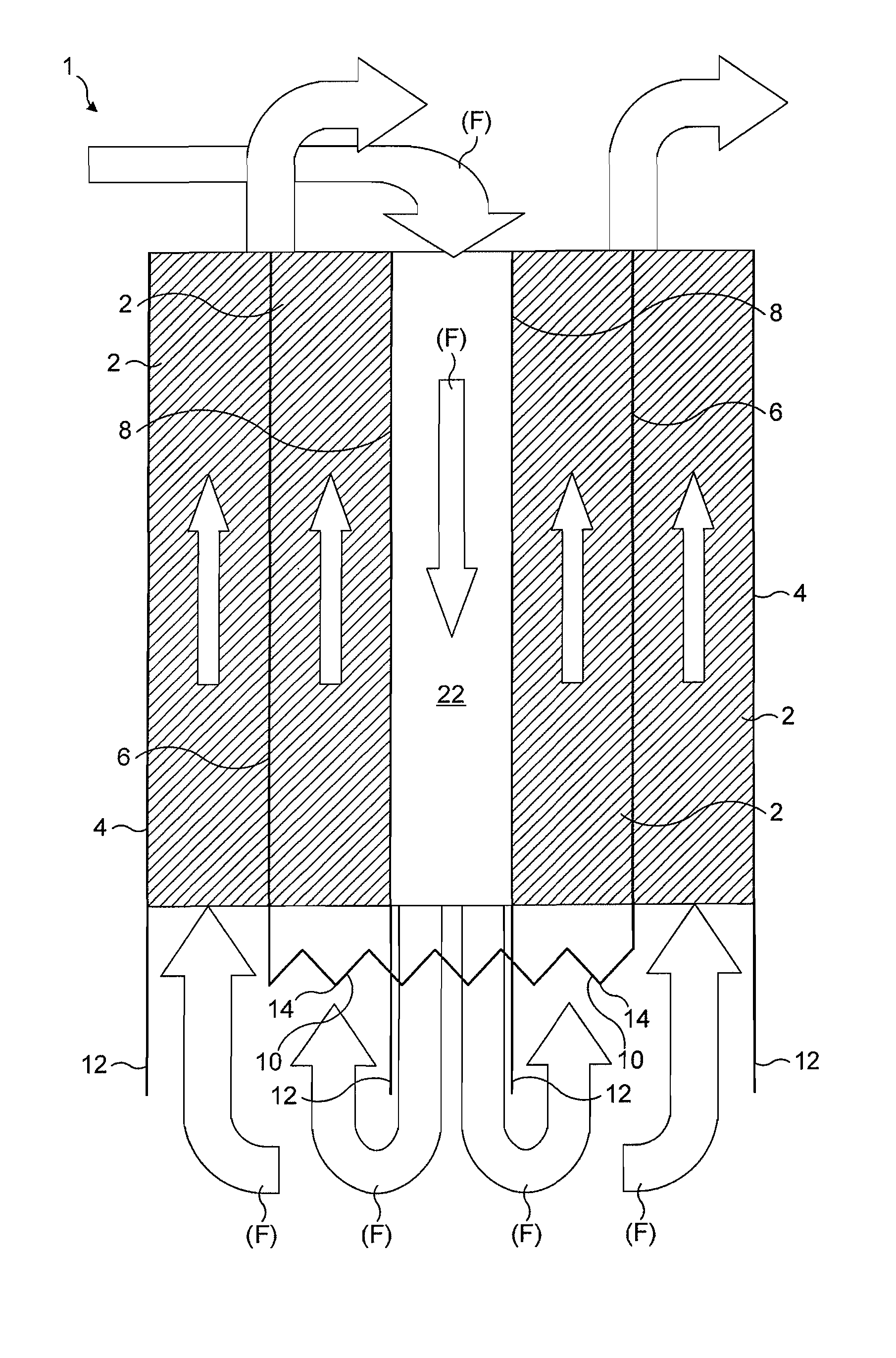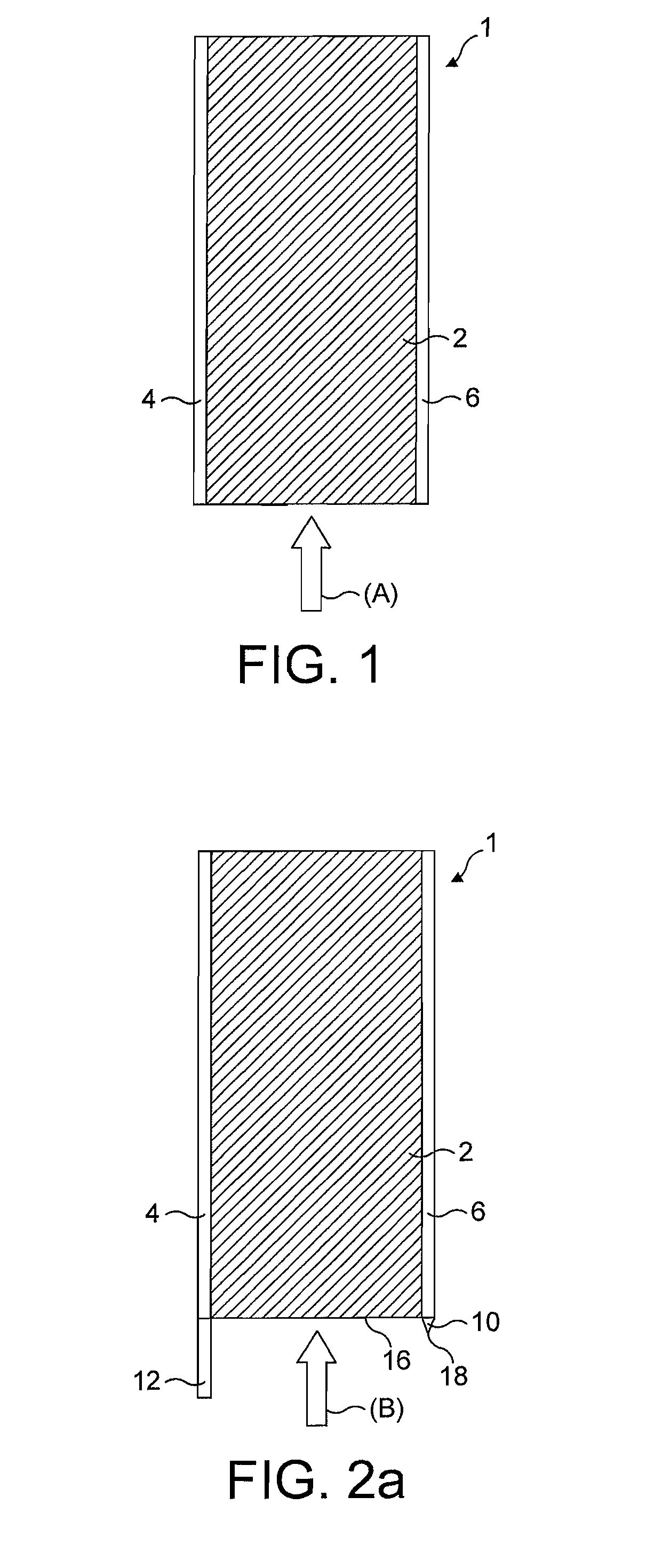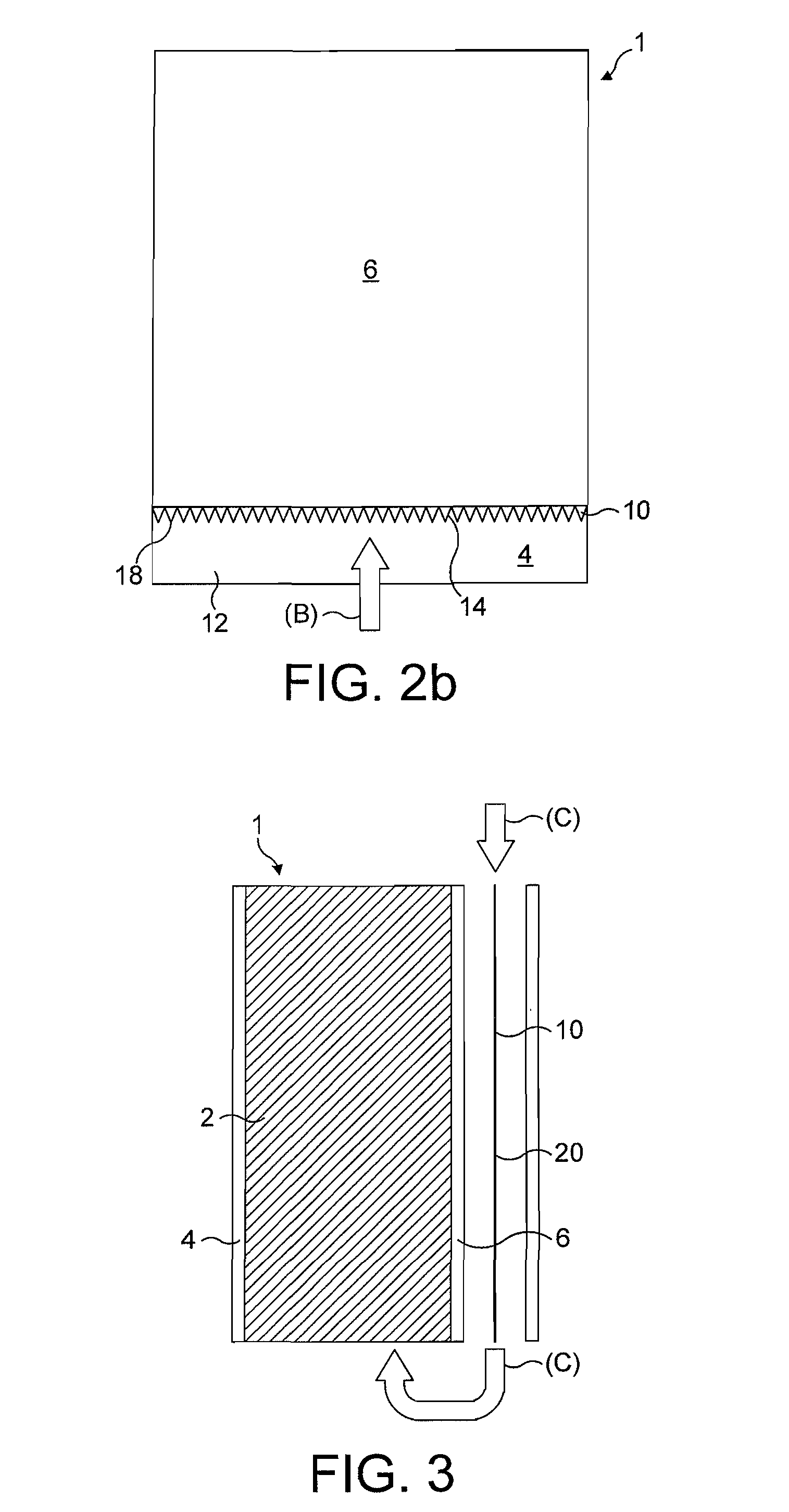Filter
a filter and electrostatic technology, applied in the field of electrostatic filters, can solve the problems of reducing the amount of dust in the electrostatic filter, shortening the life of the electrostatic filter itself and any further downstream filters, and reducing the electrostatic properties, so as to maximize the opportunity for charging and maximize the volume
- Summary
- Abstract
- Description
- Claims
- Application Information
AI Technical Summary
Benefits of technology
Problems solved by technology
Method used
Image
Examples
Embodiment Construction
[0063]With reference to FIG. 1 an electrostatic filter is shown and indicated generally by the reference numeral 1.
[0064]It can be seen that the electrostatic filter 1 comprises an electrically resistive filter medium 2 sandwiched between and in contact with a first non-porous electrode electrode 4 and a second non-porous electrode 6. In use the first and second electrodes 4, 6 are each at a different voltage such that a potential difference is formed across the electrically resistive filter medium 2. The first electrode 4 is at 0 Volts and the second electrode 6 is at + / −4 to 10 kV during use. The electrodes 4, 6 are connected to a high voltage power supply (not shown).
[0065]The first and second electrodes 4, 6 form at least part of an air pathway which is filled by the electrically resistive filter medium 2 such that in use dust laden air (A) must pass through the electrically resistive filter medium 2 along the length of the first and second electrodes 4,6. The potential differen...
PUM
 Login to View More
Login to View More Abstract
Description
Claims
Application Information
 Login to View More
Login to View More - R&D
- Intellectual Property
- Life Sciences
- Materials
- Tech Scout
- Unparalleled Data Quality
- Higher Quality Content
- 60% Fewer Hallucinations
Browse by: Latest US Patents, China's latest patents, Technical Efficacy Thesaurus, Application Domain, Technology Topic, Popular Technical Reports.
© 2025 PatSnap. All rights reserved.Legal|Privacy policy|Modern Slavery Act Transparency Statement|Sitemap|About US| Contact US: help@patsnap.com



